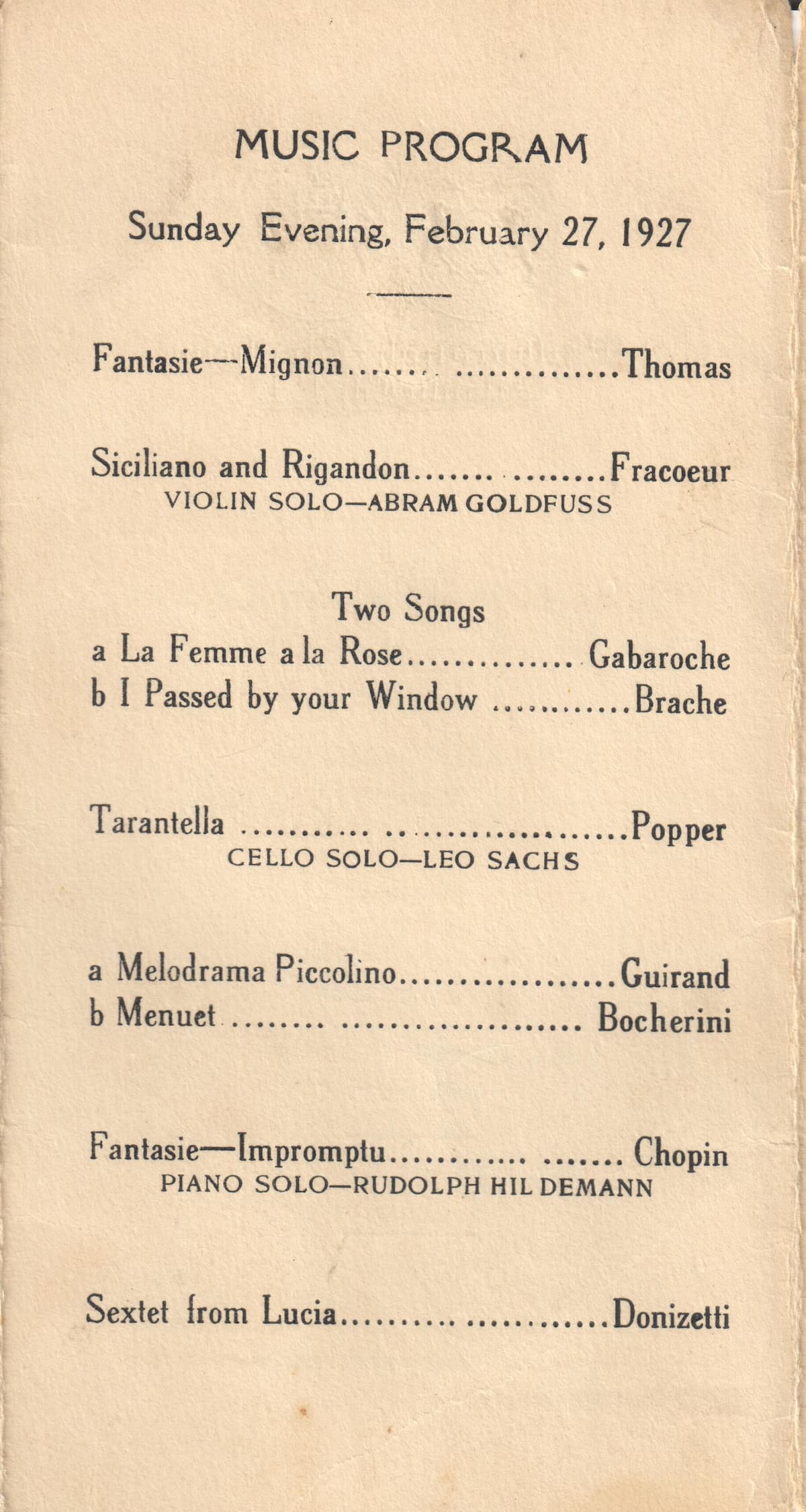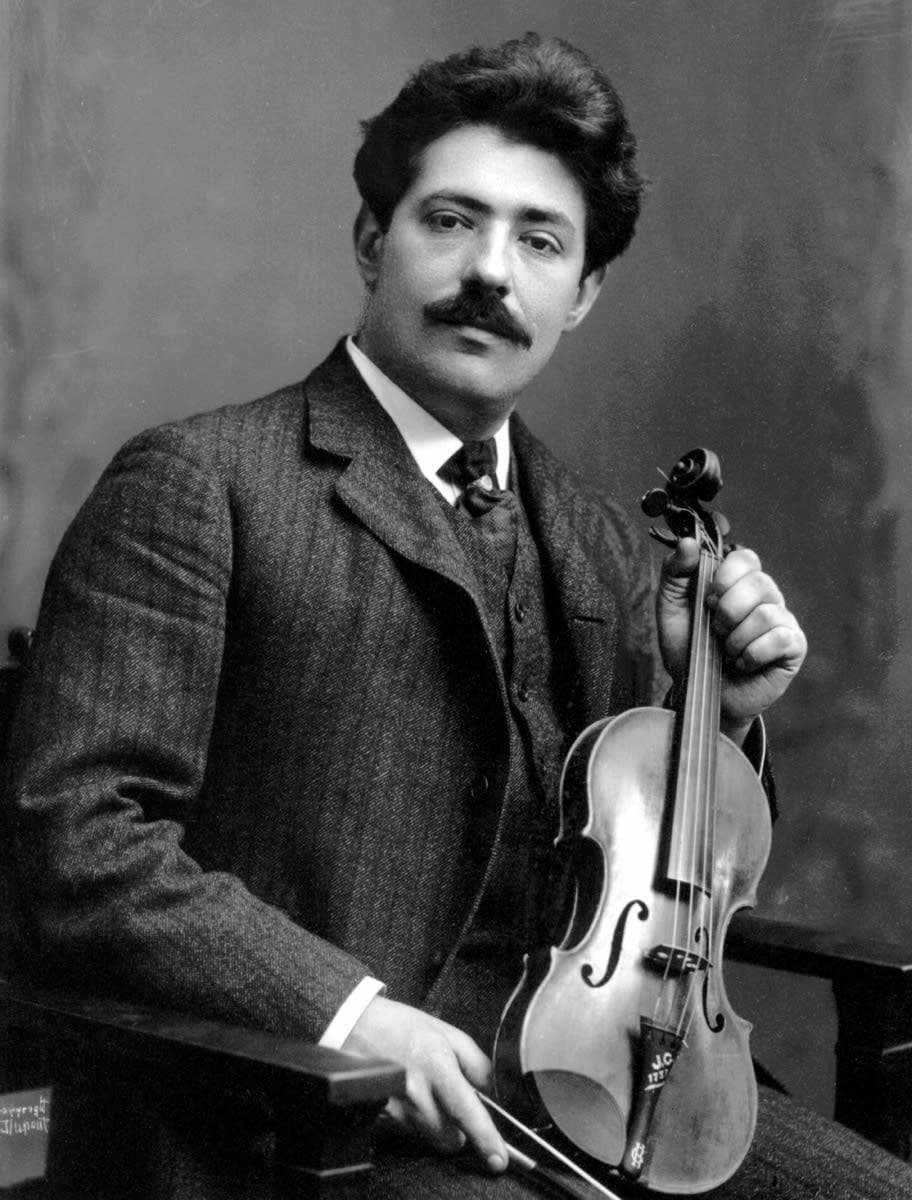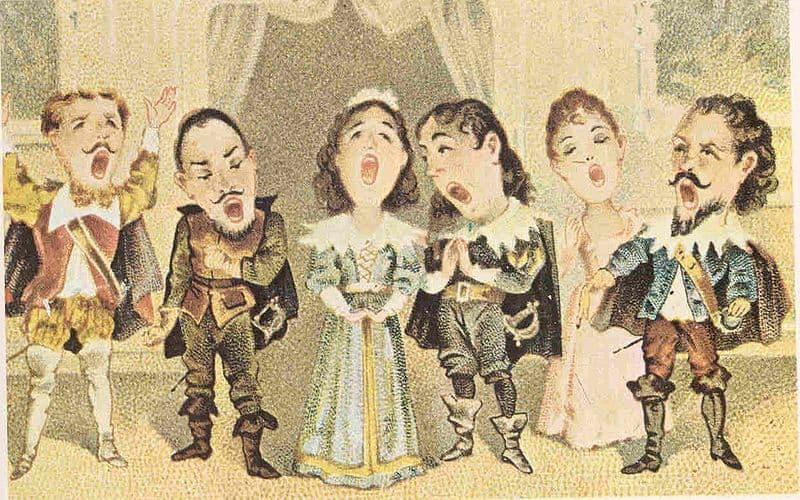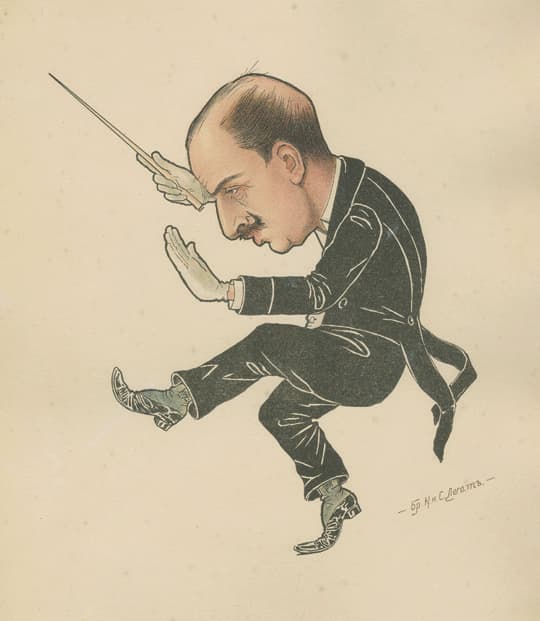After the programme on Friday, Saturday was for dancing in the Ballroom. The dancing started at 9 pm, and the first two dances were for children. After that, the adults could take the floor. The music would have been provided by a live ensemble, but we don’t have any indication if it was played by the Piano Quartet or if another ensemble was brought in.
The Sunday evening program was just as involved as Friday’s.

1927 Sunday
Music from two different operas opened and closed the evening: a fantasie on music from Ambroise Thomas’ opera Mignon and the final sextet from Act II of Lucia di Lammermoor. In the middle, another opera has its appearance.
The fantasia was probably French flautists and composer Claude-Paul Taffanel’s Grande Fantasie on themes from the opera, created in 1874. After an introduction to set the scene, there’s a cadenza for the flautist (in this situation, it would have been taken by one of the violinists). Then follows themes from the opera, embellished with variations, including Mignon’s aria ‘Connais-tu le pays?’, Philine’s aria ‘Je suis Titania’, the orchestral entr’acte that opens Act 2, and the Forlane that appears in the Overture.
Paul Taffanel: Grande Fantaisie on themes from the opera Mignon by Ambroise Thomas (Olga Leonkiewicz, flute; Kinga Kubica-Firlej, piano)
It wasn’t until 1935 that Fritz Kreisler admitted that the 14 pieces of music that he pretended were found in a French monastery were actually from his own pen, and the François Francoeur piece on the programme was one of them. Kreisler was hiding his own compositions until these works noted in their titles to be ‘in the style of…’ and it was the reviewer from the New York Times, Olin Downes, who got him to admit his subterfuge. Kreisler’s works have become standard in the violin repertoire, and his deception was quickly forgotten.

Fritz Kreisler, 1912
Fritz Kreisler: Sicilienne and Rigaudon in the style of Francoeur (Joshua Bell, violin; Paul Coker, piano)
Gaston Gabaroche was a French actor and composer, and La Femme a la Rose was one of his many songs of the early century.
Australian composer May Brahe was a rare antipodean and woman composer in the early 20th century. Unfortunately, neither of these songs is still in the repertoire.
David Popper was an Austrian cellist and composer who made his career in Vienna. His Tarantella, first published around 1880, was written at a time when he was very active as a chamber player, being part of the Budapest Quartet.
David Popper: Tarantella, Op. 33 (arr. for cello and orchestra) (Werner Thomas-Mifune, cello; Munich Chamber Orchestra; Hans Stadlmair, piano)
Ernest Guiraud’s opera Piccolino was given its premiere at the Opéra-Comique in Paris in 1876. Guiraud is best known not for his open operas, but for his work on writing the orchestral recitatives for Bizet’s Carmen and for Offenbach’s Les contes d’Hoffmann. Piccolino, a three-act opéra comique, came from the peak of his career.
Ernest Guiraud: Mélodrame de Piccolino (Jacques Thibaud, violine)
The oldest repertoire performed by the Marlborough-Blenheim Quartet comes from the 18th century. The Minuet from Luigi Boccherini’s String Quintet in E major is often mistaken for a work by Mozart.
Luigi Boccherini: String Quintet in E Major, Op. 11, No. 5, G. 275 – III. Minuetto (Schubert-Quintett)
The pianist in the Quartet had his time to shine performing Chopin’s Fantasy-Impromptu.
Frédéric Chopin: Fantasy-Impromptu in C-Sharp Minor, Op. 66 (Aimi Kobayashi, piano)
The evening closes with the sextet from the end of Act II – Arturo has come to marry Lucia, who has signed the marriage contract forced by her brother Enrico. At this point, her lost Edgardo appears in the hall, and in ‘Chi mi frena in tal momento’, the protagonists all set out their positions. This is followed by Edgardo’s throwing away the ring Lucia gave him and then, in Act III, the duel between Enrico and Edgardo.

Lucia Sextet cartoon, 1900
Gaetano Donizetti: Lucia di Lammermoor – Part II: Act I Scene 2: Chi mi frena in tal momento (Roberto de Biasio, Edgardo; Luca Grassi, Enrico; Desiree Rancatore, Lucia; Matteo Barca, Arturo; Enrico Giuseppe Iori, Raimondo; Tiziana Falco, Alisa; Bergamo Musica Festival Chorus; Bergamo Musica Festival Orchestra; Antonino Fogliani, cond.)
The evening’s repertoire is split between opera and virtuoso performances by the violinists, cellist, and pianist.
The program for Monday was an interesting mix of styles with an emphasis on dance music.

1927 Monday
The Largo from Dvořák’s New World Symphony is a solemn opening work, yet with a tuneful melody set to the text ‘Going home, going home, I’m just going home’ (words by William Arms Fisher) that may have run through listeners’ minds.
Antonín Dvořák: Symphony No. 9 in E Minor, Op. 95, B. 178, “From the New World” – II. Largo (arr. P. Breiner for piano) (Peter Breiner, piano)
Anton Rubinstein’s 1863 opera Feramors, a setting of the story Lalla Rookh, was another of the many French operas with exotic settings, familiar through the works of Bizet or Delibes. The Dance of the Kashmiri Brides was one of its best-known settings.
Anton Rubinstein: Feramors: Torchlight Dance of the Brides of Kashmir (Slovak Philharmonic Orchestra; Michael Halász, cond.)
American composer Ethelbert Nevin started his career as a virtuoso pianist in Boston before performing in Europe. He was known for his simple melodies and accompaniments for his piano pieces and songs, filled with sentiment, grace, and charm. His song in black speech, ‘Mighty Lak’ a Rose’, portrays a black nanny singing about her white charge. It was Nevin’s final composition, written in 1901.
Ethelbert Nevin: Mighty lak’ a Rose (Janice Weber, piano)
Riccardo Drigo was an Italian composer who spent most of his career in Russia, as kapellmeister and Director of Music of the Imperial Ballet of St Petersburg. Unfortunately, this work is unknown unless it’s a version of Strauss’s more famous Pizzicato Polka.

Nikolai and Sergei Legat: Riccardo Drigo caricature
Well-known to most today through its appearance in Disney’s Fantasia, with its dance between the crocodiles and hippos, elephants, and ostriches, Ponchielli’s Dance of the Hours was the Act III finale of the opera La Giaconda. In the original, the dance represents the progression of the day: dawn, morning, twilight, and night and the eternal struggle between the forces of light and dark.
Amilcare Ponchielli: La Gioconda, Act III – Dance of the Hours (Slovak Radio Symphony Orchestra; Ondrej Lenárd, cond.)
American composer Reginald De Koven’s 1891 opera Robin Hood was called the first successful American comic opera. The work is best known now for the song from Act II that became a wedding favourite: ‘Oh Promise Me’, which was a last-minute addition. This arrangement of songs from the opera for player piano captures an idea of what the Quartet might have performed.
Reginald De Koven: Excerpts from Robin Hood (arr. for player piano)
With its start with the New World Symphony and the appearance of Ethelbert Nevin and Reginald De Koven, Monday’s concert was certainly more American-focused than the two earlier days. Audiences were supposed to know not only the Broadway and popular music of their time but also pieces from opera, both serious and comic.
Unfortunately, we know nothing about the performers on these programs, not even Mr. Leo Sachs, the cellist. That’s for future research.
In looking at programs by the Quartet from other years, in 1916, music by Beethoven, Schubert, and von Suppé appeared. In 1924, music from operas was played: William Tell, Martha, The Golden Cockerel and La Navarraise as either overtures or fantasias. De Koven’s ‘Oh Promise Me’ had a separate slot on Sunday, and Excerpts from Robin Hood closed out Monday evening. In 1927, Victor Herber appears in Beethoven (Allegretto from the 2nd Symphony), a fantasia on Wagner’s Lohengrin, and a selection from Romberg’s The Student Prince.
These selected programs, only four from a period of 15 years when the Quartet would have played most weekends, give us just a glimpse of what music for the masses could be. It’s not just the popular songs of the day but the popular culture of the day, be it from the opera stage, Broadway, or vaudeville.
For more of the best in classical music, sign up for our E-Newsletter
